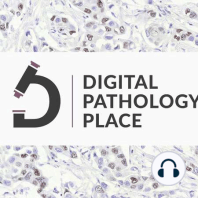30 min listen

How image analysis and artificial intelligence support digital pathology-enabled precision medicine today and what to expect in the future w/ Michael…
How image analysis and artificial intelligence support digital pathology-enabled precision medicine today and what to expect in the future w/ Michael…
ratings:
Length:
20 minutes
Released:
Mar 15, 2022
Format:
Podcast episode
Description
This episode is brought to you by Visiopharm. With the regulatory approvals of whole slide imaging systems, digital pathology became the modality for routine diagnostics. Digitalization of pathology is aiming at increasing precision and productivity in the pathology lab, but the adoption of this field is slower than expected. One of the causes of the slow adoption is that going digital in a pathology lab means a much bigger investment than just the cost of the whole slide scanners for slide digitization. Additional costs include digital storage and infrastructure, slide and workflow management, and connectivity to lab information systems. Because the improvements in precision and productivity gained by going digital are modest at best, a higher value is expected from image analysis and artificial intelligence. The research and diagnostic applications of image analysis have been explored for decades already and many have found great use in the research-diagnostics continuum. However, a large need for the standardization of tissue diagnostic assays remains unmet. Standardization of the staining and of the diagnostic interpretation of tests would tremendously benefit pathology and patient care. So far, the standardization efforts focused on the interpretation part of the puzzle. Several quantification algorithms have been developed, many of which received regulatory clearance. At the same time, the IHC assays on which the algorithms are based often lack standardization, and this is where more effort should be put. Currently, only pathology institutions that go fully digital reap the digital pathology benefits. There is not an efficient way to start slowly, rather it seems to be “all or nothing”. Enabling institutions to embark on the digital pathology journey in an incremental fashion would change the digital pathology landscape and significantly increase the adoption of this technology. The more value on different fronts digital pathology can provide to institutions and patients, the more the adoption will increase. And we have not yet explored all the ways in which value can be provided. Listen to the full episode to learn about it in more detail and visit Visiopharm’s website, to learn how they are contributing to the digital transformation in pathology. Get your "Digital Pathology Beginners Guide" E-book for free! Sign up for the waiting list here.
Released:
Mar 15, 2022
Format:
Podcast episode
Titles in the series (89)
HistoWiz: fast histology and an image database for mining from Brooklyn NY w/ Ke Cheng by Digital Pathology Podcast